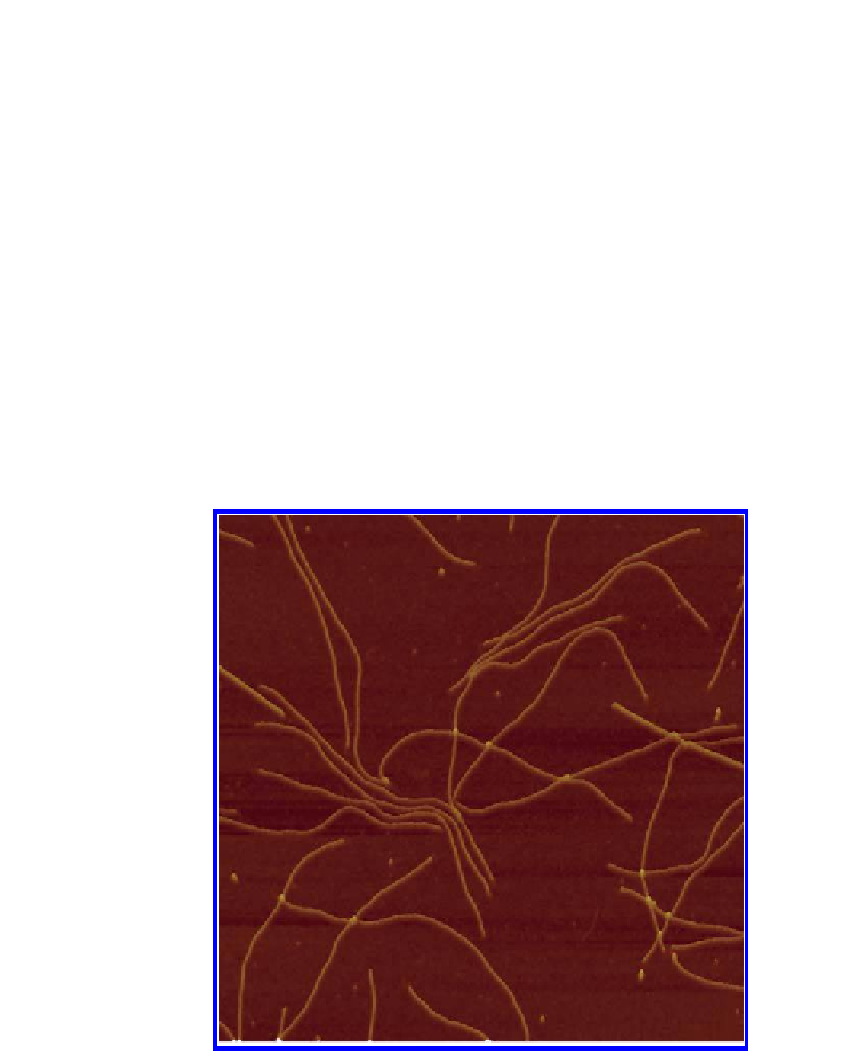Biology Reference
In-Depth Information
16.4 PROBING THE MECHANICAL PROPERTIES OF VIRUSES
Viruses are amongst the smallest infectious agents, and they are the most
abundant biological entity. They exist in almost all ecosystems and infect all
types of organism, from animals and plants to bacteria and even archaea.
They display a wide diversity in shape and although most viruses are
much smaller than bacteria (sizes range: 10-300 nm), some (iloviruses)
reach a length of more than 1
M
(a virion) typically consists of a protective coat (capsid), which contains
its genetic material (RNA or DNA). However, in some cases, such as the
human immunodeiciency virus, a protective coat is lacking, and the genetic
material is embedded within a lipid envelope. Most of the viruses that infect
plants and animals have the form of an icosahedron, but not all. The tobacco
mosaic virus, for example, has a helical structure. Yet other viruses have a
highly complex geometry. The enterobacteria phage T4, for example, has an
Figure 16.5.
AFM image of iloviruses deposited on mica. Scanning distance: 1.5
μm. The image was recorded in air using the tapping mode (kindly provided by Dr. J.
Adamcik).















Search WWH ::

Custom Search